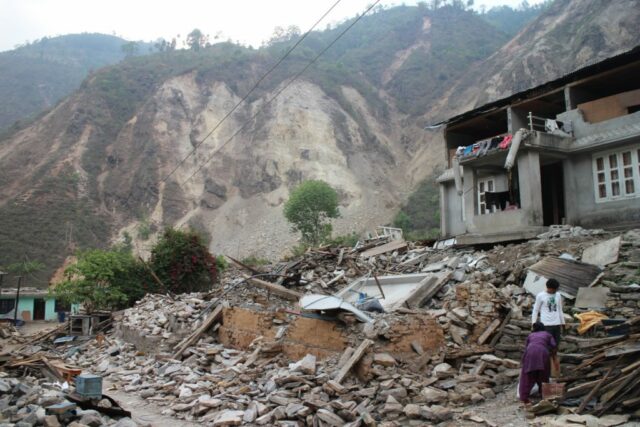At least nine persons, including three children, were killed after heavy monsoon rains in west Nepal triggered landslides.
Five members of a family were sleeping when their house was washed away by a landslide in Malika village in Gulmi district, about 250 km (156 miles) west of Kathmandu, according to Dizan Bhattarai, a spokesman for the National Disaster Rescue and Reduction Management Authority.
“Bodies of all five have been recovered,” Bhattarai told Reuters, adding that the family included two children.
In neighbouring Syangja district, one woman and her three year old daughter died in a landslide that swept away their house, while in Baglung district, which borders Gulmi, two people were killed in another landslide.
At least 35 persons across Nepal have died in landslides, floods and lightning strikes since mid-June when annual monsoon rains started. Rains normally continue until mid-September.
Landslides and flash floods are common in mostly mountainous Nepal during the monsoon season and kill hundreds of people every year. Nepal is one of the most landslide prone countries on earth, a consequence of its topography, geology, climate and socio-economic setting.
On August 2 2014, a major landslide struck in a densely populated area 80 km northeast of Nepal’s capital Kathmandu in Jure, Sindhupalchok district. With a toll of 156, it was one of the deadliest landslides in Nepal’s history. The landslide had a length of 1.26 km and was 0.81 km wide at the bottom.
Nepal reported heavy rainfall between July 1 and August 3 last year. Heavy rains triggered landslides, causing floods and severe weather-related incidents and led to casualties and damage.
More than 90% of landslides in Nepal occur during the monsoon between June and September. Even within those four months, landslides peak during July and August, according to some research. So any changes in monsoon rainfall patterns directly affect disasters.
According to a report by the United Nations’ Food and Agriculture Organization published in 2011, Nepal has one of the highest fatalities from landslides in the world. “Between 1950 and 2009, the frequency of fatal landslides was highest in China, followed by Indonesia, India, Pakistan, the Philippines, Japan, and Nepal. These seven countries accounted for 87% of the 17,830 landslide-related fatalities reported during that period in Asia,” the report said.
(With Inputs from Reuters)
Delhi based journalist pickled in journalism. Have reported from nine world capitals and almost all parts of India. Over the last three decades, I have worked for India’s mainstream English dailies and contributed to All India Radio, Doordarshan and Women’s Feature Service. Also worked for international media including Japan’s leading newspaper, The Asahi Shimbun and done assignments for The Sunday Times, London, The Telegraph, The Guardian and the Canadian Broadcasting Corporation. Worked in the Embassy of France in New Delhi and can speak French to save my life. Write on Diplomacy, Politics and the social sector. Love Nature, heritage, Nature, animals and vintage cars. Enjoy cycling and playing badminton.





